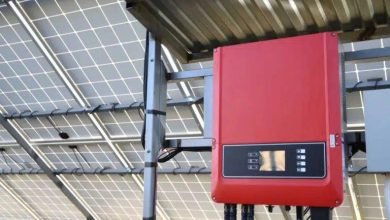
A word that is booming all the sectors and changing the world upside down is- Digitization! Nowadays, everyone is enjoying the shift from in-person shopping to on-demand deliveries with single taps from smartphones in almost all the segments we know.
The online grocery landscape is also changing and showing great imprints on customers, retailers as well as suppliers. This is an opportunity for your business to develop a grocery delivery app and take advantage of changing dynamics of the grocery market. In this blog, we will understand the need for developing grocery delivery solutions for your business, what are the different business models involved in them, and how to select the best business model for your business.
Benefits of having your own on-demand grocery delivery software
People consume groceries every day and this sector has the potential to grow in a most rapid way. With the advent of technology as well as pandemics, the grocery delivery business has reshaped itself in more digital ways than ever before. In pandemic situations, people are more likely to go for online grocery solutions as they promote contactless payment, more safe and convenient.
The world has witnessed growth in on-demand grocery delivery software in the last 2 years. This is the latest trend that breaks the brick-and-mortar concept and hence, it’s the right time to build an on-demand delivery app if you don’t have it till now or update your old one with the latest trending features. Let’s quickly analyze the benefits of on-demand grocery delivery solutions for your business:
The rise in demand
With the features like same-day deliveries or fast deliveries and that too at their doorsteps, customers are more pleased with on-demand grocery delivery services and they are adopting it wholeheartedly.
Customers are happy to pay for convenience
On-demand grocery delivery apps promote a hassle-free shopping experience and your customers need not carry the cart for items they have purchased or to stand in long queues. They would like to pay for their convenience.
Fast deliveries and time-savvy services
Customer experience on-demand grocery apps are more time savvy and quick than in-person shopping. All the daily needs and shopping items are just one touch away from their smartphones. They can easily manage all their grocery need from their exhausting schedules and busy lifestyle through your on-demand grocery delivery app.
Brick and mortar are now old-school concepts
The brick and mortar stores are now being replaced with digital solutions. Keeping yourself and your business as per the latest trend is the key mantra of a successful strategy. People are reluctant to go to stores for the same grocery items which they can easily purchase by sitting on their couches with the one-tap solution on their smartphones.
Different business models in the online grocery system
Online grocery delivery solutions are one of the fastest-growing niches in the e-commerce business in 2022. The following are the business models of online grocery delivery systems. And you can adopt any one of or a hybrid of the following as per your business requirements:
Inventory Model
As the name suggests, in this type of business model, the platform owner stocks up the items from different suppliers and store them in a self-maintained warehouse or store. When they receive the orders from their customers, they deliver them to the same using their in-house inventory.
This model is generally used by niched and single-product stores. Example: Dairy milk delivery, fresh vegetable delivery, etc.
Multi-Vendor Marketplace Model
This e-Commerce business model is also known as the “Zero Inventory Model” as the platform owner has no responsibility for managing the inventory. In this type of model, the customer places an order through an online grocery delivery website. And the website transfers that order to the respective grocery stores.
The store then takes required action and manages the shipping through in-house delivery networking. The delivery person then collects the order and delivers it to the customer. Example: Amazon, Peapod, etc.
Shopping Model
The shipping model works like a multi-vendor marketplace model with the exception that the customers have no choice to chose the store while ordering. When the platform receives an order, it transfers the details directly to its in-house delivery personnel who will be then responsible for shopping for that item and delivering it to the customer. Example: Instacart, Swiggy, etc.
Hyper-local Model
For this type of model, you can target a particular or local geographical area. In the hyper-local model, you can enable customers to buy anything from their neighborhood stores. You can start delivering daily basic needs, groceries, fresh packaged food and vegetables, and other necessities from local vendors. This type of model is famous for fast deliveries and maintaining customer preferences. Example: Grofers, Amazon fresh, etc.
Click and Collect Model
This is also called the “Buy Online-Pickup In-Store(BOPIS)” business model, where your customers purchase the product from your on-demand grocery delivery software. And later collect them from stores as per their convenience physically. It is the most effective business model for implementing a contactless delivery system during the pandemic period. Example: Kroger.
How to choose the business model for your grocery delivery business in 2022
Ample research is required for choosing the right business model for your on-demand grocery delivery software solution as grocery businesses are heading in the online world. And you have to stand out in the competition. The above-mentioned business models have given you a clear picture to filter out the best-suited model for your business. Following are the points you need to consider while choosing your business model for online grocery delivery solutions:
- Estimate the value of your online grocery delivery solution in the market space. It should include both the cost fit as well as demographics of the market.
- Test your delivery channels and find how fast and reliable delivery you can provide to your consumers. In online grocery delivery, on-time delivery matters a lot. Select the model that will be helpful for you to quick delivery expansions.
- Focus on customer preferences and take timely feedback from them. If you find one business model is not satisfying your end-users either change your business model or use a hybrid business model.
- Keep a keen eye on your procurement cost, customer acquisition cost, and cost of operations while selecting your business model.
Conclusion
Technology is reshaping our lifestyle and when everything is going digitize with pace. Best grocery delivery apps are recreating the market and changing the customer experience rapidly. To be in this competitive market, this is the right time for grocery delivery app development for your business. This blog will help you to select the right business model for your business and perform all your related operations more efficiently and effectively.



